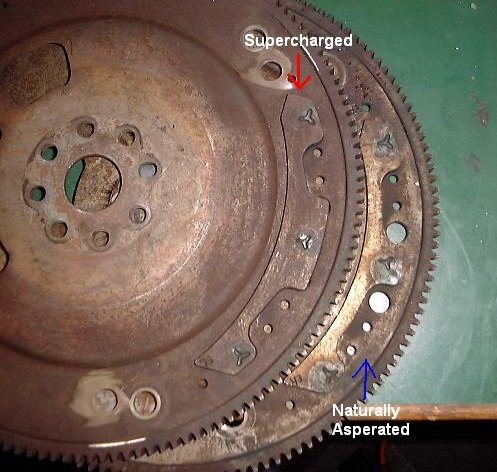
3800 Series II Flexplates and Flywheels
Another somewhat debated topic is: can you run a 3800 Series II naturally aspirated flywheel or flexplate on a 3800 Series II Supercharged engine? Well before I answer that question, let me point out that while a Series 1 n/a or SC flexplate might bolt up to a Series 2 engine, the balance is different so you shouldn't try using it, otherwise you will get some bad vibrations that could lead to engine failure.
The next question that you might ask is WHY would you need to run a naturally aspirated flexplate or flywheel on a supercharged engine anyway? Well, quite simply if you want to bolt the SC engine to an auto transmission other than what came stock with it, the torque converter bolt pattern in the SC flexplate may not work with it. Or if you want to put a supercharged engine into a car with a manual transmission, you have no choice but to use the 95-up 3800 Camaro/Firebird flywheel. For front-wheel-drive applications, you will need to have the flywheel milled down to the same thickness as the flywheel that originally came equipped with that transmission. However, it will need to be rebalanced to SC specifications, and here is why:

Notice the Supercharged flexplate has a LARGER counterweight when compared to the Naturally Aspirated unit. While the N/A flexplate will bolt to the SC crank, the engine will exhibit slight vibrations and might experience some premature bearing wear after prolonged use. For those of you who are using an auto transmission with the smaller torque converter bolt pattern, you will need to have the SC flexplate redrilled for use with the smaller torque converter bolt pattern. These flexplates are made of mild steel so you can drill them yourself with correct measuring or you can have someone do it for you. There are a few 3800 performance companies on the internet that will perform this service for a modest price. The harmonic balancers also have different counterweights between the L36 and L67 so make sure you use the balancer that matches your rotating assembly!